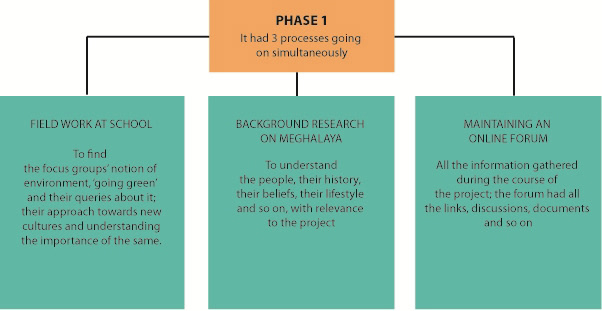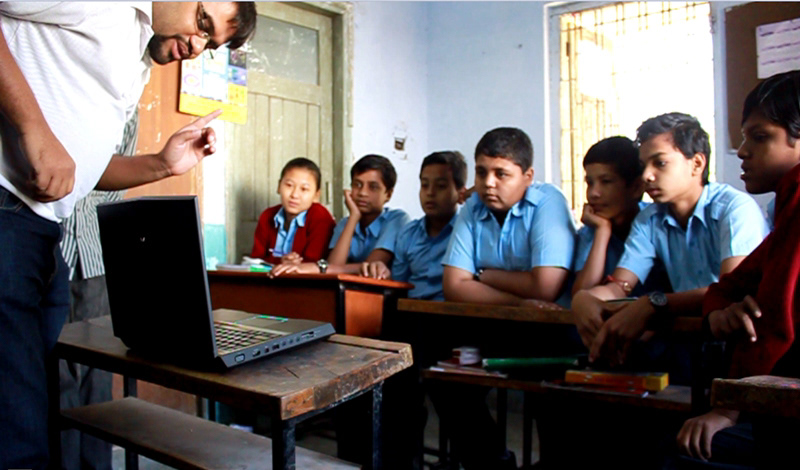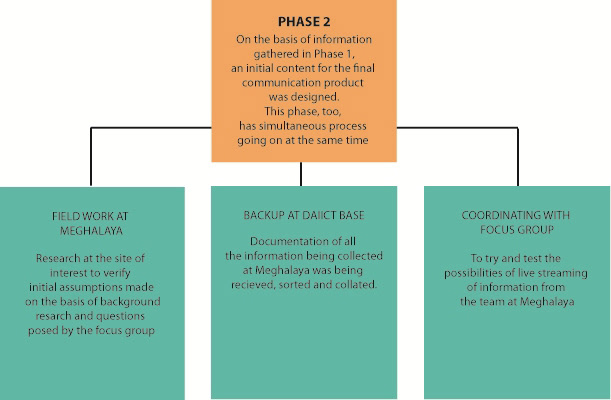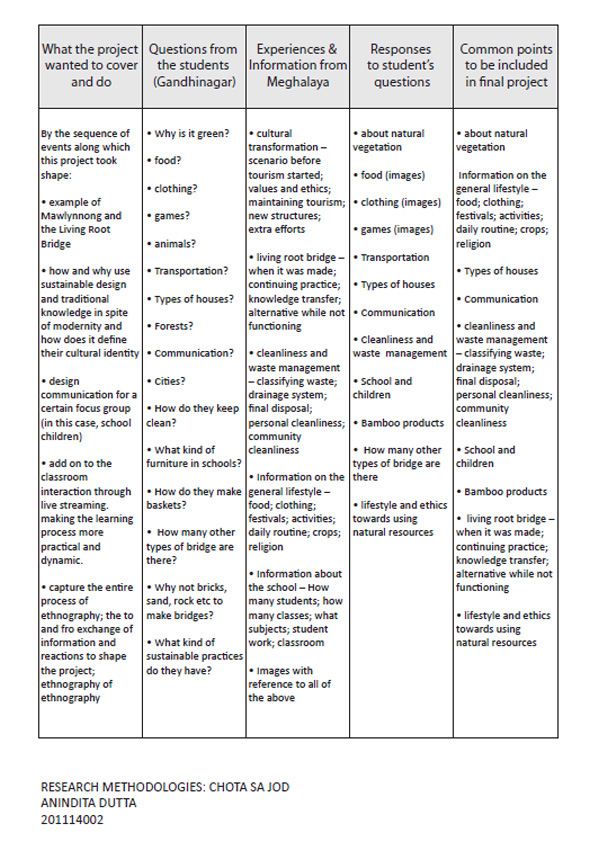Using the example of Mawlynnong and the Living Root Bridge, the brief of this project was to find out how and why the people of Meghalaya use different types of sustainable design and traditional knowledge in spite of modernity and how it defines their cultural identity.
Being a part of a communication design course, it made sense to come up with some form of communication for a certain focus group (in this case, school children) for which this research would be conducted. Also, it was necessary to find out what were the points that THEY (the focus group) wanted to see as a part of the final communication product.
Moreover, through this project, one was hoping to add on to the classroom interaction by actually showing the students places through live streaming so that the questions they posed could be answered from the field, thus making the learning process more practical and dynamic.
Lastly, the project hoped to capture the entire process of ethnography on Mawlynnong being done for the school children and the to and fro exchange of information and reactions which shaped each step of the research. Thus, the final outcome of this project was a short film called Chhota Sa Chhod.
PROCESS:

A presentation to outline the interaction with the students of The Little Angels School, Gandhinagar: this was a part of Phase 1 of the project. The interaction being discussed here was an attempt to familiarize the The Meghalaya Project Team with the level of understanding of geography and environmental science of the focus group beyond textbooks. Also, this interaction would give the team leads about what interested the focus group when they hear of or visit a new place. This was necessary as the project required to introduce Meghalaya to the students by its geographical factors and environment friendly practices. (Co-presented by Samuel Pushpak)

Team member, Manu Kamath, interacting with students at the Little Angels School, Gandhinagar.

The focus group, students of Std VII of The Little Angels School, Gandhinagar.

The Living Root Bridge at Riwai, near Mawlynnong. It is said to have been built over hundreds of years by entwining the roots of two rubber trees across the banks of the river. (Photograph by Padmini S. Hegde)
Speaking to the school children at the Mawlynnong school as team member, Ashna Liza Sunny, shoots a footage of the same. (Photograph by Padmini S. Hegde)
Cleanliness is a culture in Mawlynnong. All the residents, irrespective of their age, contribute to keeping their village clean at all times. (Photograph by Anindita Dutta)
With team member Padmini S. Hegde, speaking to a school teacher, Bah Rishot, at Mawlynnong. (Photograph by Ashna Liza Sunny)


CHHOTA SA JOD:
The final film, was not just a coverage of Mawlynnong and the Living Root Bridge based on the queries of the focus group, but also the coverage of the entire process and point of the project. Keeping in mind the academic aspect of the project for the course 'Research Methodologies' at DAIICT, this could be summarized as an exercise in ethnographic research.
(Team members: Anindita Dutta, Avik Ganguli, Ashna Liza Sunny, Jenil Malavia, Jinisha Gajjar, Mohit Goel, Manan Oza, Padmini S Hegde and Samuel Pushpak.)
